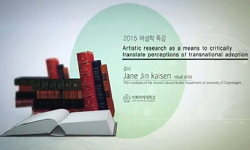This study indicates that the cultural tourists are much more likely to have regional characteristic motives such elements of daily life and remnants of the past than psychological motives of which was perceived by general travelers. The cultural tour...
http://chineseinput.net/에서 pinyin(병음)방식으로 중국어를 변환할 수 있습니다.
변환된 중국어를 복사하여 사용하시면 됩니다.
- 中文 을 입력하시려면 zhongwen을 입력하시고 space를누르시면됩니다.
- 北京 을 입력하시려면 beijing을 입력하시고 space를 누르시면 됩니다.
DIFFERENCE OF PERCEPTION ON TOURIST ATTRACTING ATTRIBUTES BETWEEN GENERAL TOURIST AND CULTURAL TOURIST
한글로보기https://www.riss.kr/link?id=A30090398
-
저자
Jung, Sung-chae (Dept.of Tourism Management, Honam University)
- 발행기관
- 학술지명
- 권호사항
-
발행연도
2001
-
작성언어
English
- 주제어
-
KDC
331.5
-
자료형태
학술저널
- 발행기관 URL
-
수록면
335-346(12쪽)
- 제공처
-
0
상세조회 -
0
다운로드
부가정보
다국어 초록 (Multilingual Abstract)
The attributes of hospitality, cleanliness and quality of service were significantly different between general and cultural tourists. However, the results indicate that there are significant difference with both populations of general and cultural tourists in the attributes of shopping, cost and social structure. T-test analysis shows that scenery, tradition and gastronomy were significantly different level of 0.001, while, there is no significant differences among the differences of mean of accessibility, historic sites and entertainment. This study reflects the assumption that the perceptional of cultural elements as a factor in touristic attractiveness would vary across cultural tourists and general tourists.
This study has provided a comprehensive demographic profile of cultural tourists. The results of this study indicate that there are significant differences with regard to travel behavior between cultural tourists and general tourists. In this point of view, the results suggest that those interested in this field should be aware of the significant differences that exist in executive characteristics. It is recognized the importance for particular segment and its marketing implications.
This study indicates that the cultural tourists are much more likely to have regional characteristic motives such elements of daily life and remnants of the past than psychological motives of which was perceived by general travelers. The cultural tourists is also likely to be interested in the destinations that contain history, activities reflecting distinctive regional tradition, gastronomy of food preparation particular to a region and both exterior and interior, which lends distinctive appearance to a region than perceived attributes such as cleanliness, quality of service and hospitality of the general travelers.
The attributes of hospitality, cleanliness and quality of service were significantly different between general and cultural tourists. However, the results indicate that there are significant difference with both populations of general and cultural tourists in the attributes of shopping, cost and social structure. T-test analysis shows that scenery, tradition and gastronomy were significantly different level of 0.001, while, there is no significant differences among the differences of mean of accessibility, historic sites and entertainment. This study reflects the assumption that the perceptional of cultural elements as a factor in touristic attractiveness would vary across cultural tourists and general tourists.
This study has provided a comprehensive demographic profile of cultural tourists. The results of this study indicate that there are significant differences with regard to travel behavior between cultural tourists and general tourists. In this point of view, the results suggest that those interested in this field should be aware of the significant differences that exist in executive characteristics. It is recognized the importance for particular segment and its marketing implications.
동일학술지(권/호) 다른 논문
-
- 한국문화관광학회
- 조현준
- 2001
-
- 한국문화관광학회
- 진영재
- 2001
-
- 한국문화관광학회
- 宋大孝
- 2001
-
21世紀 文化産業 育成을 통한 失業問題와 地域葛藤 解消方案에 관한 硏究
- 한국문화관광학회
- 李章柱
- 2001




 KISS
KISS



